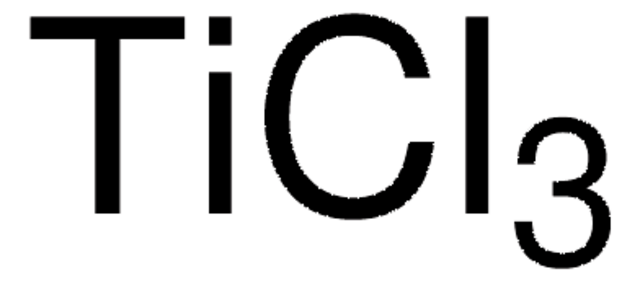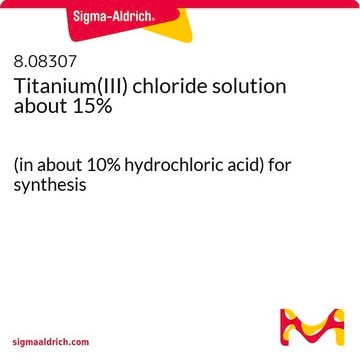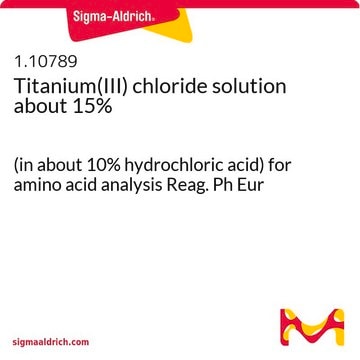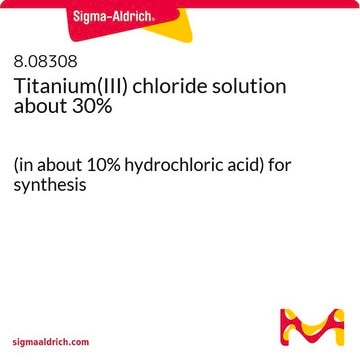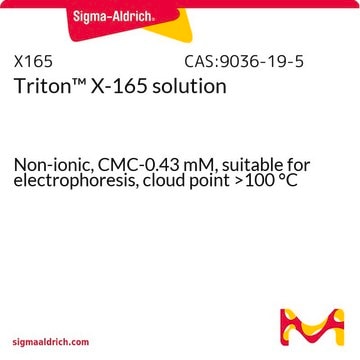249998
Titanium(III) chloride solution
~10 wt. % in 20-30 wt. % hydrochloric acid
Synonym(s):
Titanium trichloride
About This Item
Recommended Products
reaction suitability
reagent type: catalyst
core: titanium
concentration
~10 wt. % in 20-30 wt. % hydrochloric acid
density
1.192 g/mL at 25 °C
SMILES string
Cl[Ti](Cl)Cl
InChI
1S/3ClH.Ti/h3*1H;/q;;;+3/p-3
InChI key
YONPGGFAJWQGJC-UHFFFAOYSA-K
Looking for similar products? Visit Product Comparison Guide
signalword
Danger
hcodes
Hazard Classifications
Eye Dam. 1 - Met. Corr. 1 - Skin Corr. 1B - STOT SE 3
target_organs
Respiratory system
Storage Class
8B - Non-combustible corrosive hazardous materials
wgk_germany
WGK 3
flash_point_f
Not applicable
flash_point_c
Not applicable
ppe
Faceshields, Gloves, Goggles, type ABEK (EN14387) respirator filter
Choose from one of the most recent versions:
Already Own This Product?
Find documentation for the products that you have recently purchased in the Document Library.
Our team of scientists has experience in all areas of research including Life Science, Material Science, Chemical Synthesis, Chromatography, Analytical and many others.
Contact Technical Service